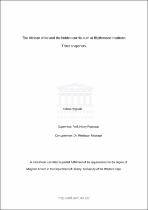| dc.description.abstract | This mini-thesis seeks to understand how the colonial and apartheid state imagined the African child in South Africa through education policies and their associated hidden curriculum. It asks what educational project was deemed suitable for the African child and how did this project configure her future? At the core of this enquiry is a preoccupation to understand how institutions, their curricula and objects rid themselves of colonial precepts. In working through this, I employ Blythswood Institute as a provocation to think and to historicise the education of African children, such as those at Blythswood, in three moments: colonialism and the founding of Blythswood in 1877; apartheid and the passing of the Bantu Education Act of 1953, and the post-apartheid times of democratic South Africa. | en_US |

